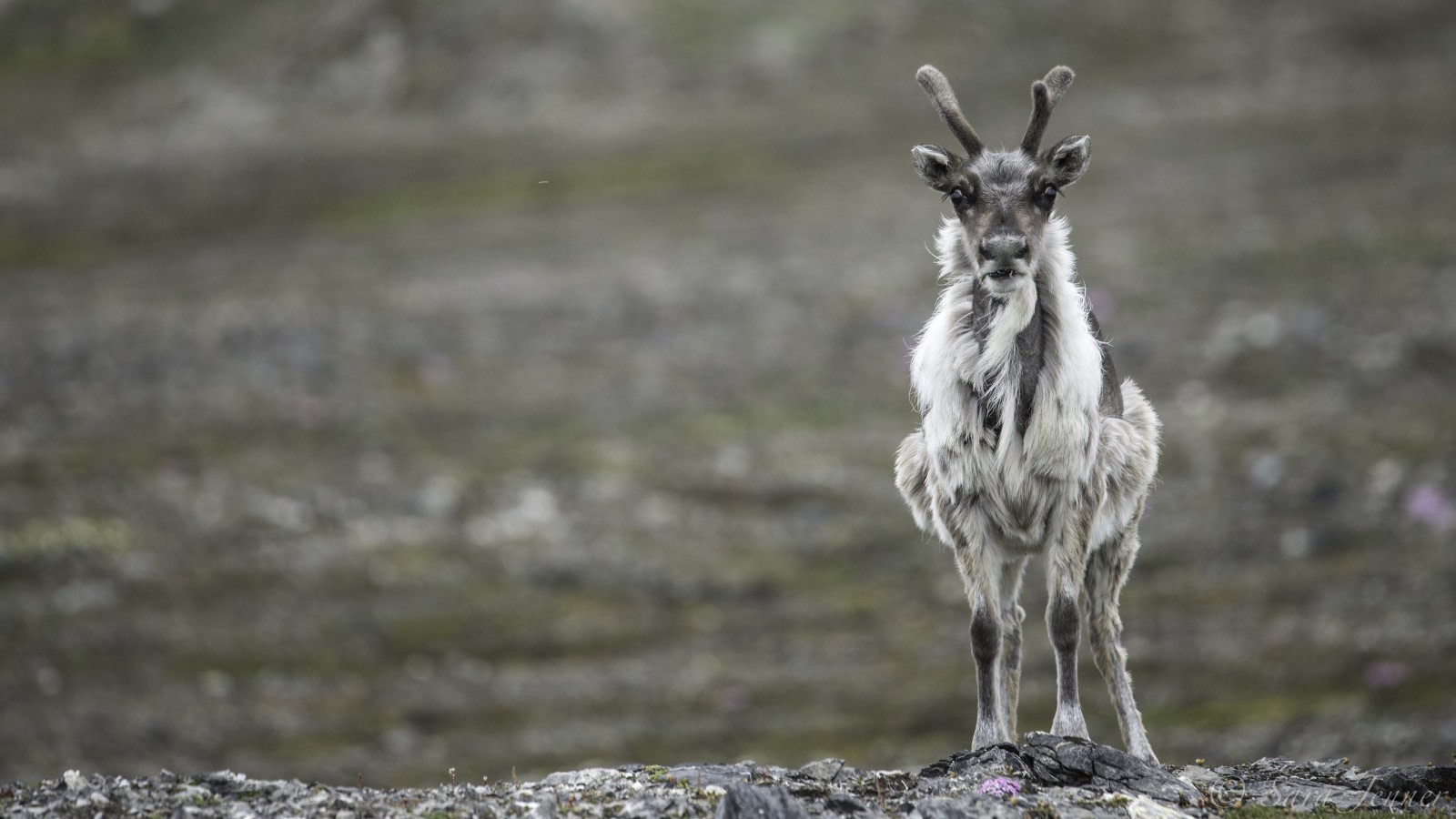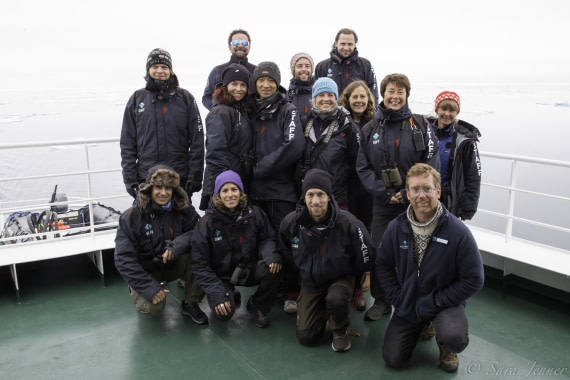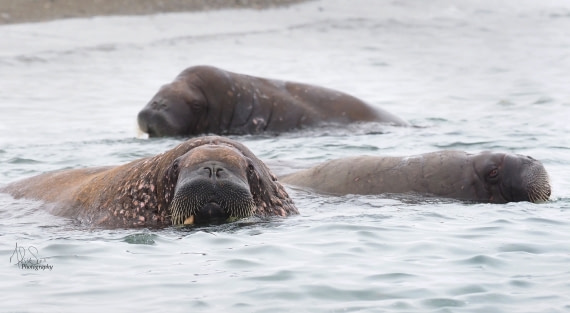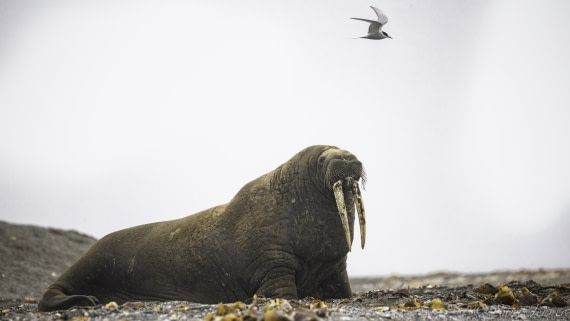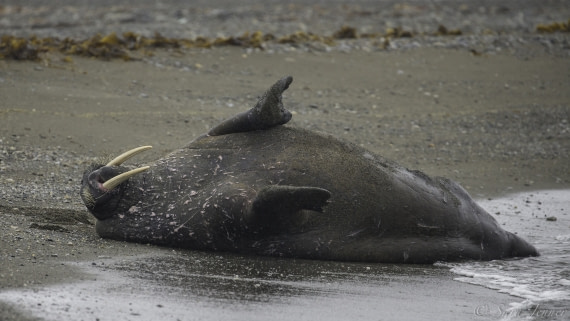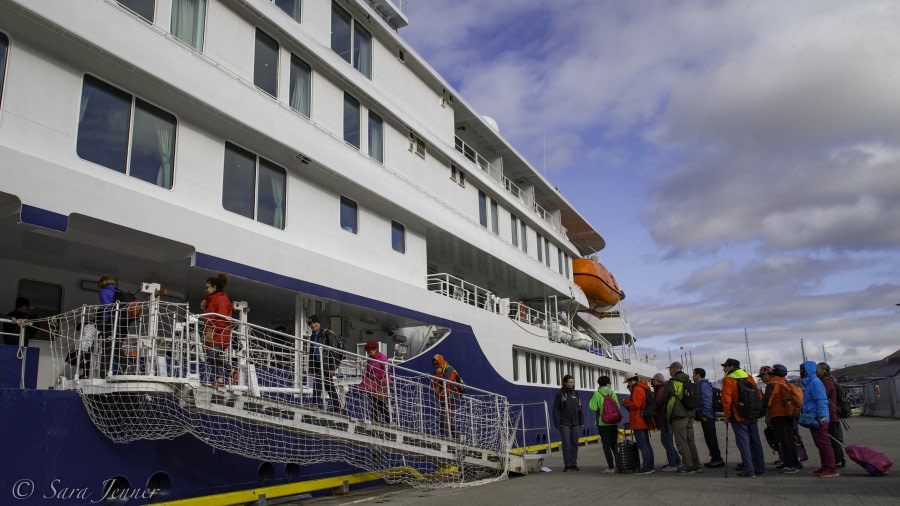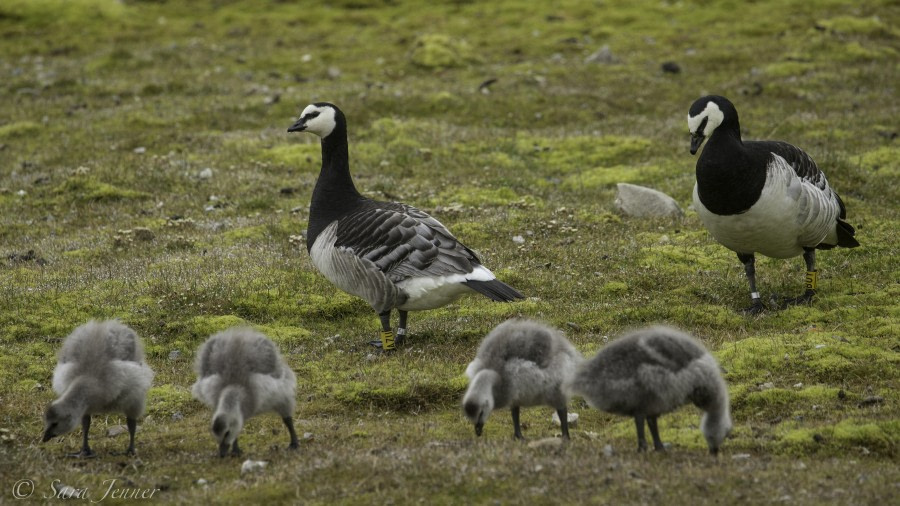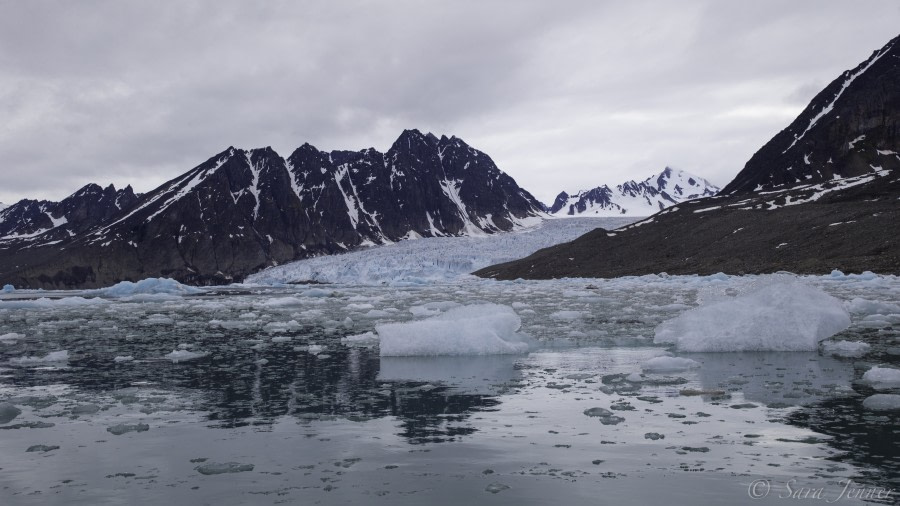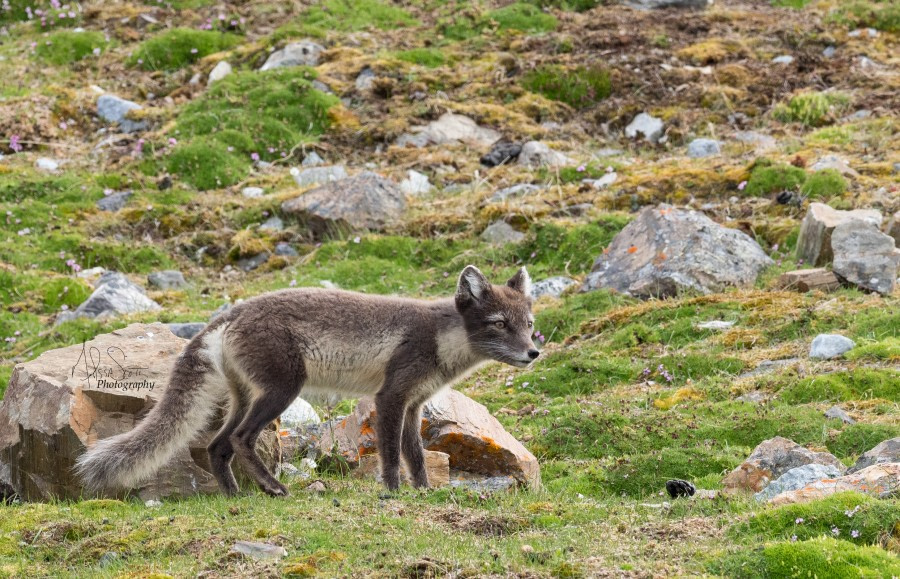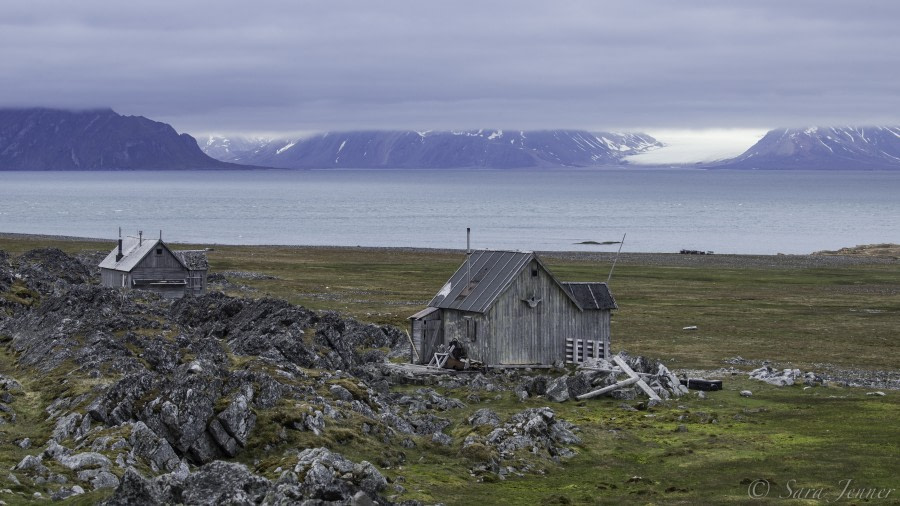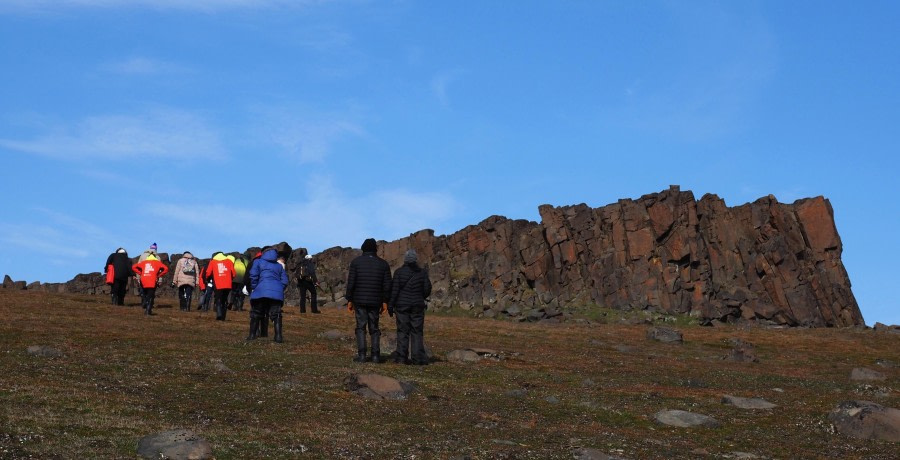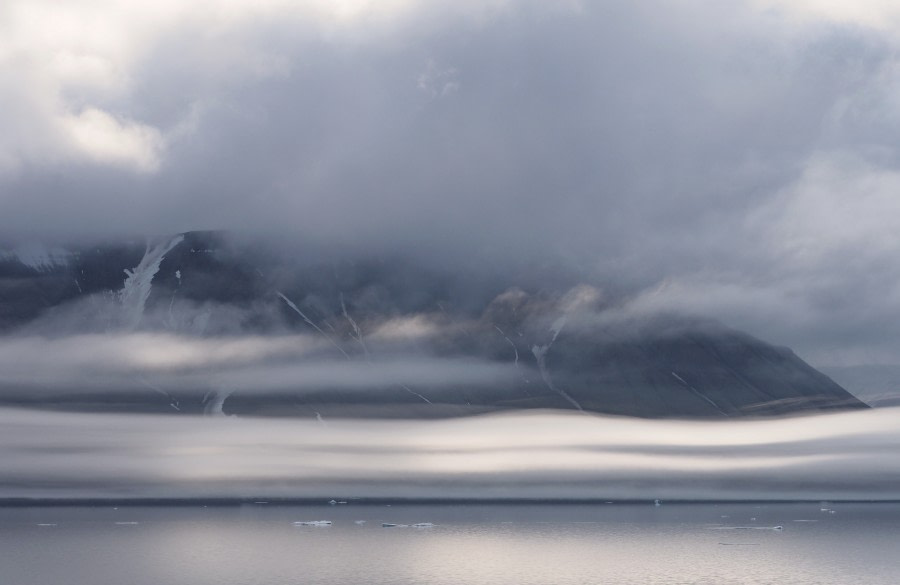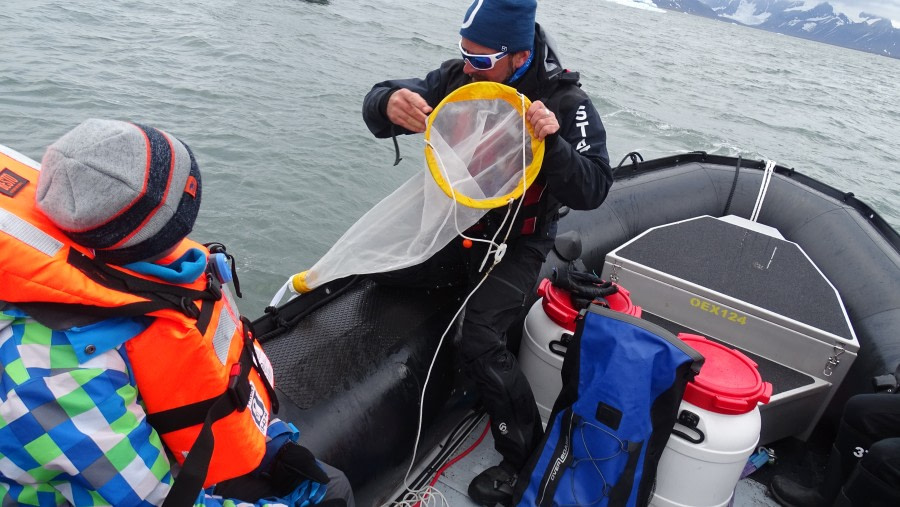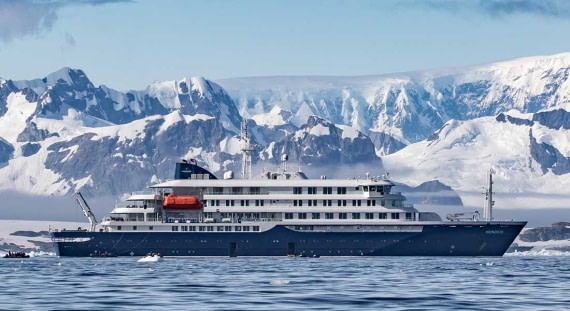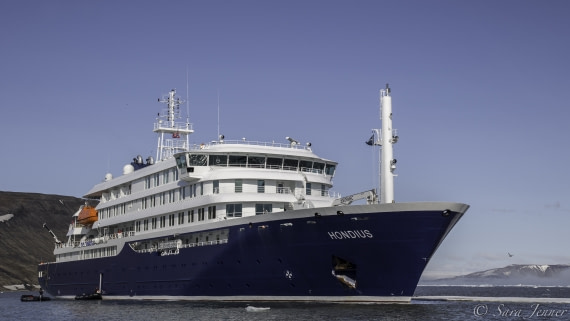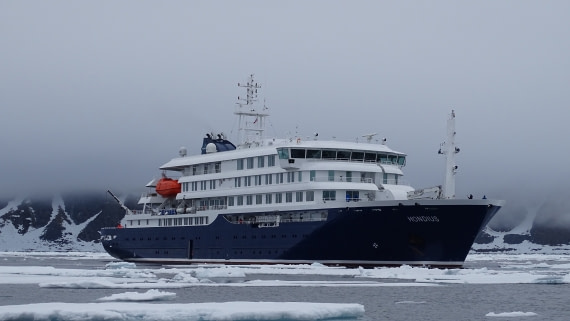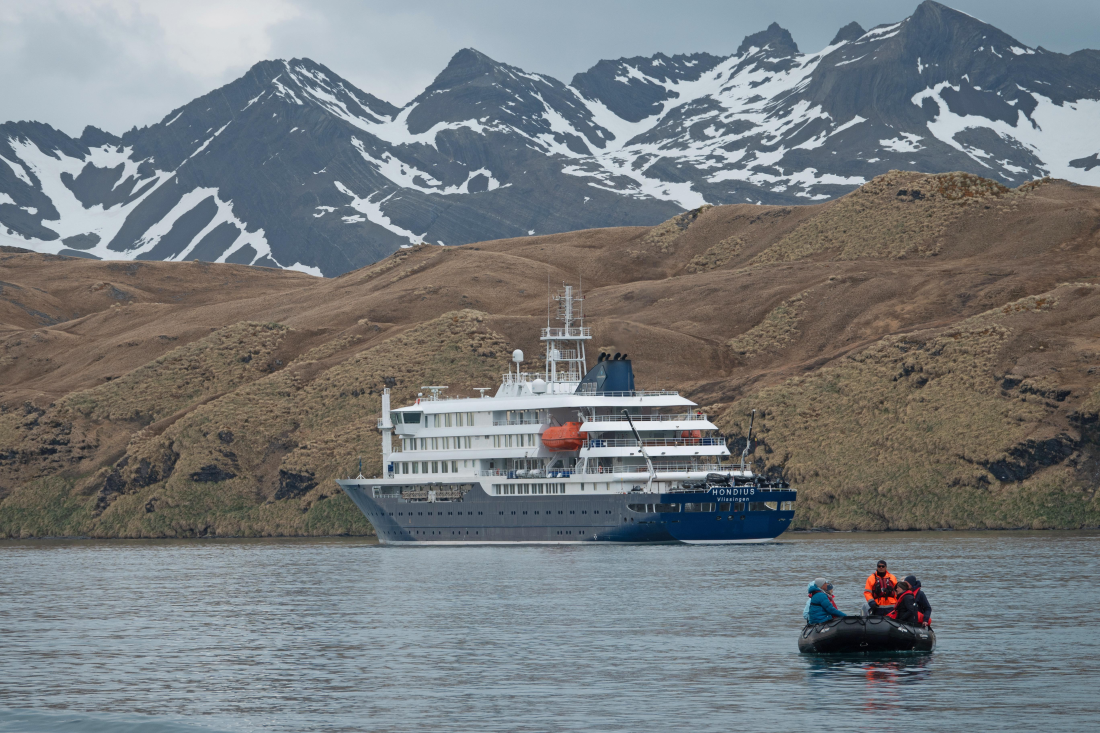| Datum: |
20.07.2019 |
| Positie: |
78°37’.5 N, 022°53’.9 E |
| Wind: |
E2 |
| Weer: |
Fog |
| Luchttemperatuur: |
0 |
A few of us awoke before the wake-up call, roused from our slumbers by the irregular movement of Hondius as she forced her way into the maze of pack ice at the eastern edge of Freemansundet. We peered groggily out of cabin windows and found ourselves in a moving monotone world of mist and sea ice. We stood for a second absorbing this stark seascape until we heard the now familiar morning bing-bong, followed by the estuarine tones of Adam. He announced that the weather was foggy, and a gentle south-easterly breeze was ruffling the sea surface between the ice floes.
After another sumptuous breakfast we headed out onto the decks to take in the sights and sounds of the pack-ice; a truly wild Arctic environment. Outside it was a brisk -1°C, compounded by the breeze and the damp air. From vantage points around the boat we scanned the ice, looking for signs of life; we saw guillemots, a bearded seal, and plenty of kittiwakes and fulmars wheeling above the leads of open water. As the morning progressed, we pressed northwards and the fog closed in around Hondius. An impromptu lecture on glaciology was announced. Laurence gave a lecture in the lounge whilst Jerry presented in Chinese in the lecture theatre. We learned about how glaciers are formed, how they flow, and how they mold the landscapes that they occupy. We also heard about the diverse and unique glaciers on Svalbard; this relatively small archipelago in the high Arctic hosts some of the most interesting glaciers on Earth and glaciologists are still working to understand their complex behavior.
After lunch the fog began to thin, and as we passed among the roiling banks of fog, we could occasionally get a glimpse of clear skies. Eventually we could also see the distant peaks of Edgeøya and Barentsøya, sentinels guarding the waters of Hinlopenstretet. The wind had eased through the morning, and died completely in the afternoon; the sea was a dark mirror, reflecting the grey of the glowering Arctic sky. As the visibility improved, we spotted a juvenile walrus in the distance, hauled-out on an ice floe. We cautiously approached, careful not to disturb the slumbering giant. Just as we were leaving the walrus, we had an announcement from Adam, two polar bears had been spotted in the distance! We hurriedly grabbed our coats, binoculars, and cameras, and headed for a vantage point on the outer-decks. As Hondius drew slowly closer we realized that there were in fact three bears; a mother with two young cubs! We watched from a respectful distance as the mother bear roamed across a large plate of sea ice, stalking the seals resting on the ice. The cubs followed her at a distance of several hundred meters, giving her a little space to hunt. We spent a glorious couple of hours observing these beautiful animals before reluctantly heading off once more, bound for Freemansundet and the island of Spitsbergen, our destination for the morning.
Our afternoon of surprises was not quite over yet; our Hotel Manager Michael announced that hot chocolate would be served on the front deck, replete with lashings of cream and a hearty tot of rum! Steaming drinks in hand, we gathered for an impromptu group photo taken by Sara from a perch high on the decks above. We lingered on deck as conditions outside were magical; the surface of the ocean was absolutely free of flaws; a perfect mirror all the way to the horizon. As we stood and took it all in guillemots, fulmars, kittiwakes, and even an Arctic skua passed low over the water around Hondius. Eventually we tore ourselves away from this beautiful scene and headed to the lounge for recap. Adam explained the plans for tomorrow; we are heading to the southern fjord of Hornsund. Melissa followed with a presentation about sea ice, explaining how it forms and its importance as a habitat and as a substrate for life; sea ice underpins the base of the Arctic food web. Sara then gave a presentation on marine mammal identification, giving rafts of useful information about pinnipeds and how to distinguish the different species.
Dinner was excellent as usual, but this evening was extra special as it was complemented by amazing views from the dining room windows. As we dined Hondius made her way through the narrow channel of Freemansundet, steep walls of sedimentary rocks towered above us and the billowing banks of fog shrouded drifting bands of sea ice, the whole scene was lit gold by the evening sun.
